The Sparkly Magic of Crystals!
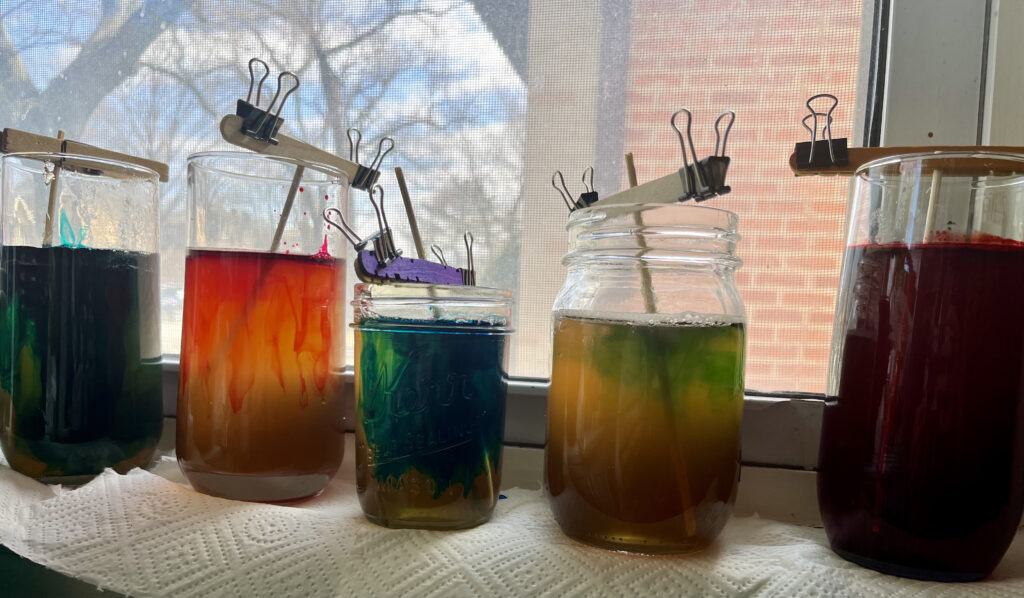
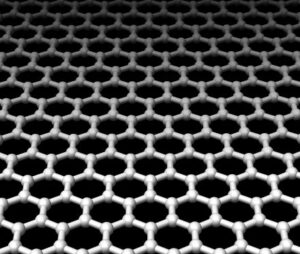
The kids and I were at one of my very favorite places in Chicago: the Museum of Science and Industry when we noticed one of their pop-up hands-on experiment kiosks. In case you haven’t experienced these little stations, sometimes, in the midst of all of the awe and stimuli that is the MSI, they wheel out little tables and staff scientists will talk through an experiment or a concept that kids can play with. It’s so special – a moment of shared wonder and curiosity in the middle of all the bells and whistles – like the eye of a science tornado. When we happened upon them on this day, they were talking about graphene, a unique and fascinating crystalline substance that is being developed for all kinds of amazing technology and application. So what is it? It’s one single layer of graphite – yes graphite, like your pencil tip! – one atom high. On its own, graphene is thinner than a human hair, but stronger than steel – virtually lighter than air and indestructible. The applications are mind boggling – honestly more boggling than my mind could handle on that busy, bustling day, but I never forgot about it. I went home and started poking around.
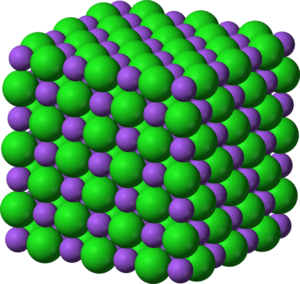
I went down a bit of a rabbit hole about its structure, because I was (and honestly am still) having a hard time wrapping my head around how something could be so light and so strong (I know, spiders would probably have something to say about it), and the structure of crystals in general. In science, matter is defined the way it’s made, and in this case, crystals are made up of a series regularly repeating atoms and molecules. They make a pattern! Any substance that’s made up of a regular pattern of atoms and molecules is a crystal, or more technically, a crystalline solid. Anything made up of random atoms and molecules is an amorphous solid (an excellent term). Crystals are all around us, all the time – from jewels and gems, to the salt and sugar that flavor our food, snow and ice, and of course the pencils we write with – graphite, and by extension, graphene.
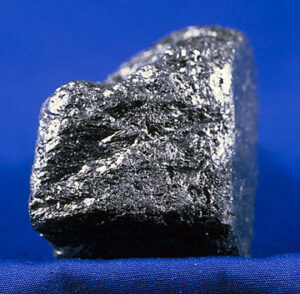
I decided to build a STEAM Engines video and project around crystals – what are they, and how are they formed. After all, who http://www.ece.mcgill.ca/~ts7kop/images/graphene_xyz.jpgdoesn’t like sparkles? The focal points I really wanted to hit were the structural patterns that crystals take, and how some of the more common crystals (salt and sugar) are formed. Desi and I talked through these points, and because I am apparently a dog with a bone, we talked about graphite – it’s as interesting as graphene! Natural graphite is really soft and feels kind of slippery, but it’s also very heat resistant. Because of this, it’s used in all kinds of really different ways, like batteries for electric cars, paint, and of course, everyone’s favorite writing utensil.
To demonstrate how you can make crystals at home, Haven and I decided to try two different experiments: sugar crystals, aka rock candy, and making crystals with Borax.
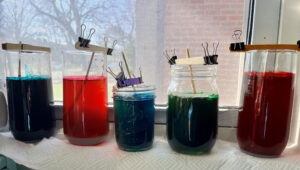 Rock candy gave us a great opportunity to talk about supersaturated solutions (when you’re using way more solute than you need in your mixture). We used a recipe from Science Buddies, but you can find TONS of different instructions out there. This is a good thing, because though we were overall successful, only three of our sticks gave us results. This is an important lesson – science is not always satisfying. That doesn’t mean we didn’t learn anything, or that it wasn’t meaningful. In fact, as we mentioned in our video, we came away with some really good questions to test if we try this experiment again. Like what was up with those
Rock candy gave us a great opportunity to talk about supersaturated solutions (when you’re using way more solute than you need in your mixture). We used a recipe from Science Buddies, but you can find TONS of different instructions out there. This is a good thing, because though we were overall successful, only three of our sticks gave us results. This is an important lesson – science is not always satisfying. That doesn’t mean we didn’t learn anything, or that it wasn’t meaningful. In fact, as we mentioned in our video, we came away with some really good questions to test if we try this experiment again. Like what was up with those 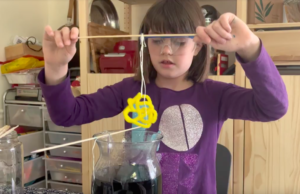 green crystals? They really took off! If we tried a different recipe, would we have different results?
green crystals? They really took off! If we tried a different recipe, would we have different results?
We used the recipe on the 20 Mule Team Borax website for our Borax crystals, and got AMAZING results. It was also a really fun way to spend an afternoon.
 We had a great time experimenting with crystals, and we’re not the only ones! During my research/trip down the rabbit hole, I discovered that NASA is currently working with crystal growth on the ISS. Though certainly a lot more complicated than making rock candy and Borax sparkles in our kitchen, it’s gratifying to know that we aren’t alone in our fascination with crystals.
We had a great time experimenting with crystals, and we’re not the only ones! During my research/trip down the rabbit hole, I discovered that NASA is currently working with crystal growth on the ISS. Though certainly a lot more complicated than making rock candy and Borax sparkles in our kitchen, it’s gratifying to know that we aren’t alone in our fascination with crystals.

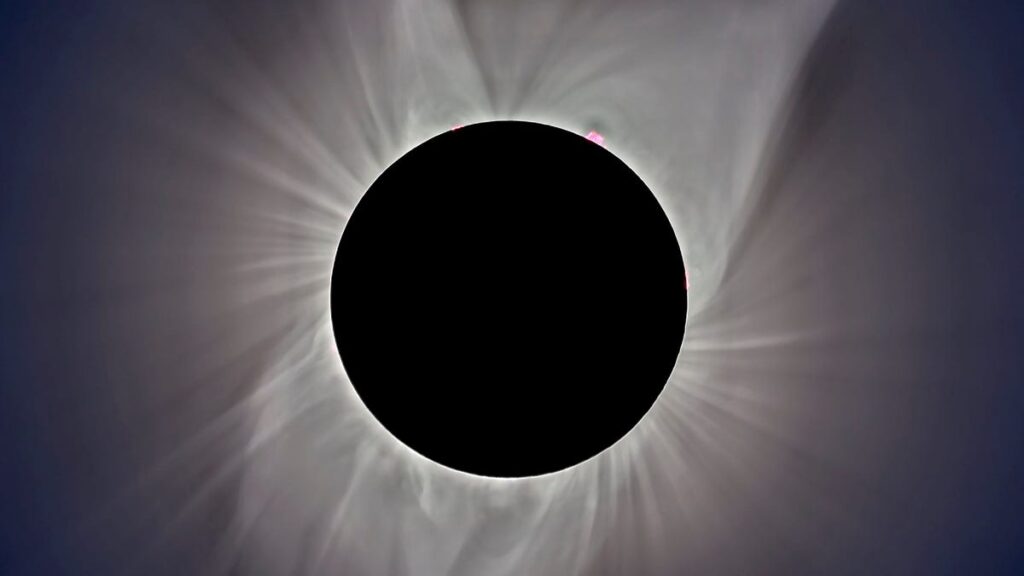

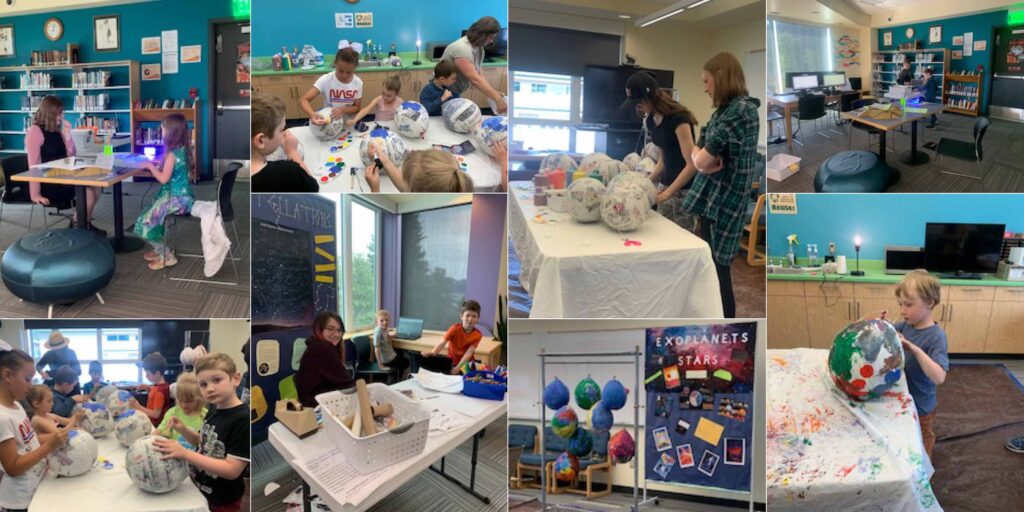
Responses